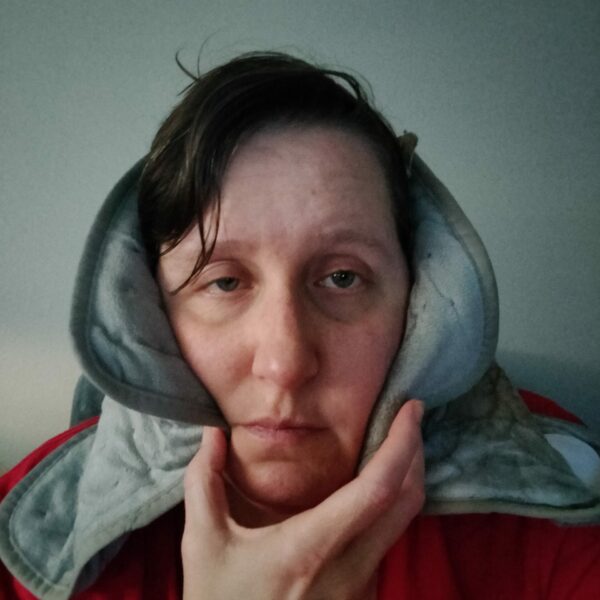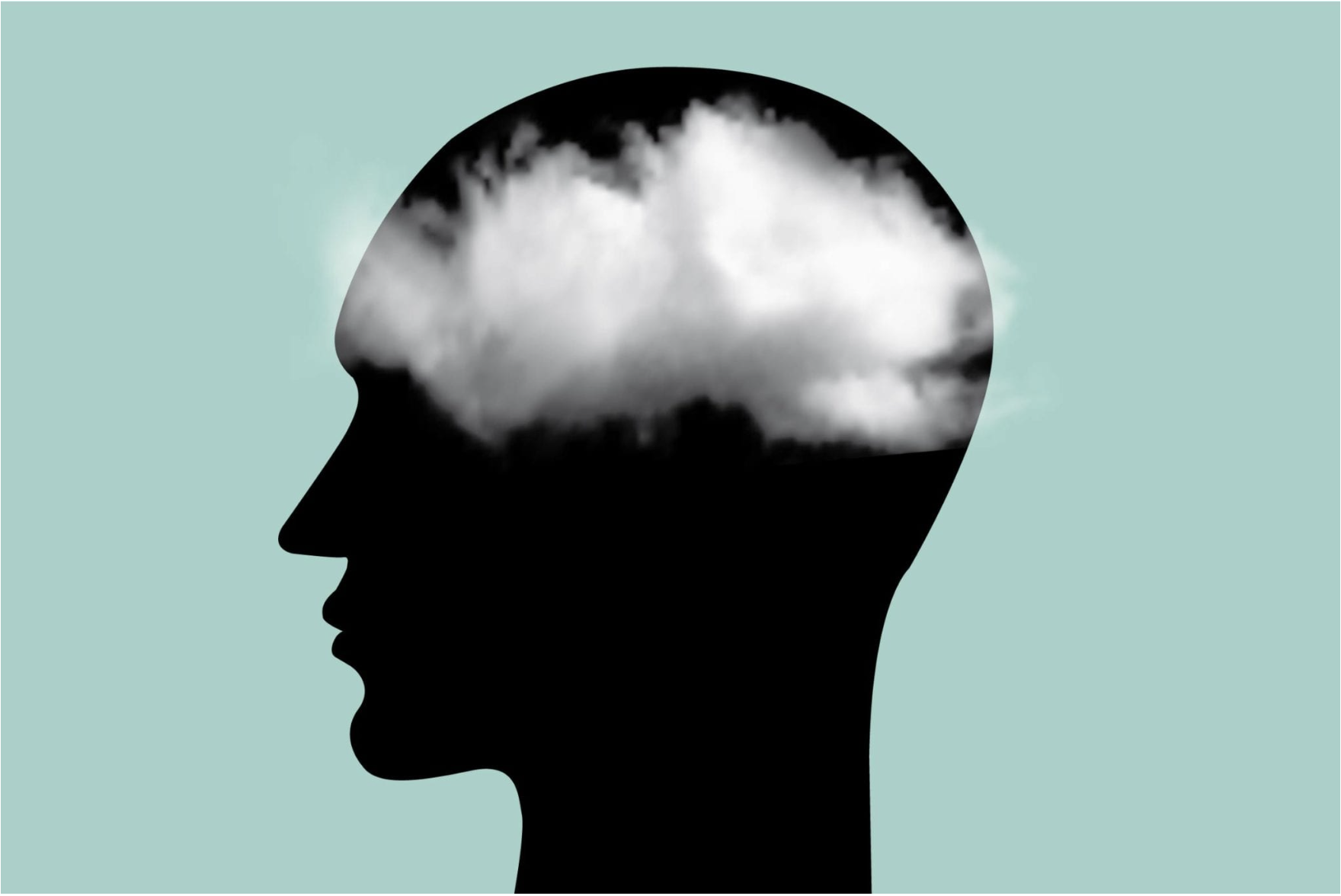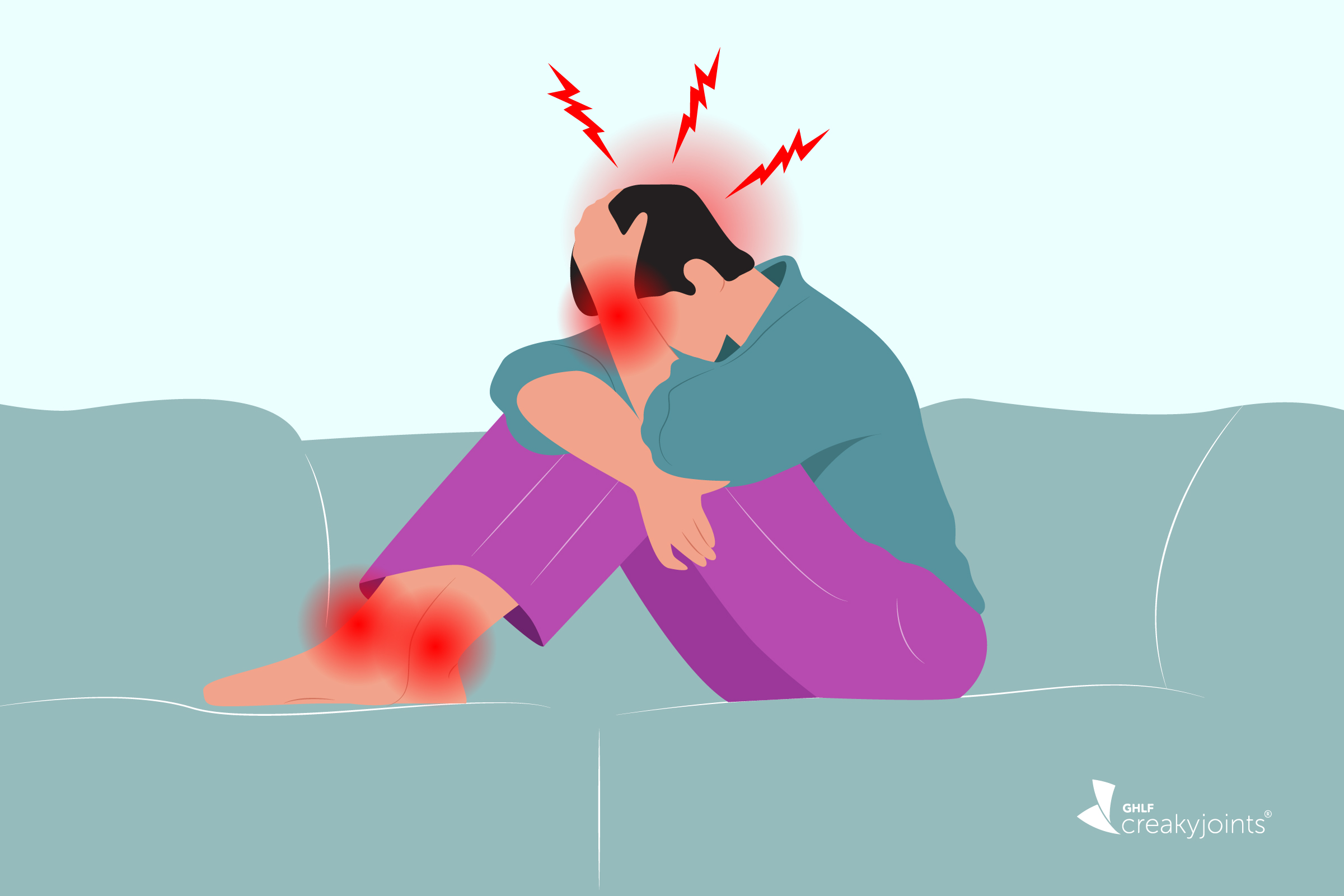The Up-End Migraine Project reveals key gaps in episodic migraine care, aiming to drive change and improve treatment options for patients through insights from both providers and patients.
I Already Juggle Multiple Chronic Illnesses and Autoimmune Conditions, But Adjusting to Chronic Migraine Has Been the Hardest One Yet
I Already Juggle Multiple Chronic Illnesses and Autoimmune Conditions, But Adjusting to Chronic Migraine Has Been the Hardest One Yet
March 10, 2022
Jennifer Walker

As my multiple autoimmune diseases and illness diagnoses have continued to stack up for the last 10 years, I’ve often felt like I could handle whatever came my way. Each new diagnosis was devastating, of course, but my previous chronic illnesses had prepared me well for dealing with more of them. I live with and advocate for fibromyalgia, rheumatoid arthritis, spondyloarthritis, anxiety, depression, and more.
But I was not prepared to handle the onset of chronic migraine, which occurred over the last two years during the pandemic. It has been one of my biggest challenges to live with. I honestly did not think I was going to get through to the other side and be in a better place. (Spoiler alert: I am — mostly.)
From Seasonal to Chronic
I’ve had seasonal allergies and seasonal migraines my whole life. Every spring and fall I would get them like clockwork for as long as I can remember. They would usually last all day, sometimes more than one day. I would spend my time in the dark with a wet, hot washcloth on my forehead trying to ease the pain and break up the congestion.
After I was diagnosed with rheumatoid arthritis and fibromyalgia, I began experiencing more intense migraines. These attacks regularly lasted a couple days and included intense nausea and sometimes vomiting. They were still usually seasonal, although every once in a while, I would also get a migraine right after a bad arthritis or fibro flare. Because I was so used to enduring pain with my flares and living with pain 24/7, I just put up with it.
It never occurred to me to seek treatment or ask my doctor about it. Then, in early 2021, the migraines began to occur regularly.
I am very allergic to cedar, which is in the pine family. In Texas where I live, cedar season goes from late November to the end of February/beginning of March. Having my allergy season endure through the holidays and right through the coldest time of the year — when I am already struggling because of how weather affects my health — makes it even more difficult for me.
Yet, last year my migraines began after cedar season was over. By the end of April, my migraines were so bad I was having trouble seeing clearly. I was having so many episodes in a week that I was starting to lose chunks of time in my life. There was one week that was so filled with nausea, dark black rooms, quiet, and intense pain that made it impossible for me to see what was in front of my face, that I did not remember one conversation I had at work or with my partner. I did not remember eating, cuddling with my dog, watching TV, or … anything. I could not tell you anything about my week if you asked. It was a blur — a solid memory of intense, throbbing pain that makes me nauseous to think about, even now.
It scared me so much I reached out to my allergy doctor hoping to get better medication for my allergies. She was unavailable until June, so I had to wait.
Seeking Out Support
At this point, I was hopeful. I felt I might get better. I doubted my experience — that my symptoms were that bad. I was afraid I had exaggerated. Even after 10 years of advocating for myself — and being proven right time and time again about my health — I still doubted what I felt in my own body. I was sure that having that many migraine attacks in a week would stop. I figured things would be normal by the time I saw my doctor.
It was at this time I began to reach out for support and help. My therapist suggested an app on my phone to track how many migraines I have, when they start, the details surrounding them, etc. That way I can be informed and will not forget information when I see my doctor. I reached out to my dear friend Joseph Coe, of GHLF, who also hosts a podcast all about migraine and head pain called Talking Head Pain. He suggested migraine glasses so I could more easily look at computer screens since I work from home and am online all day. He also suggested a lamp to try. More than that, he was kind and supportive. I asked him about his migraine experiences, and he was open and honest.
His kindness, ability to listen, and thoughtfulness went a long way in helping me cope with a condition I found very scary. I couldn’t just distract myself to get through it. None of my usual coping mechanisms (such as art, gentle yoga, or crocheting) worked with this because I can’t focus my eyes in the throes of a migraine.
Getting My Diagnosis
When I finally saw my allergy doctor, she did a CT scan and bloodwork to see if I had any unusual sinus cavities or a hint of an infection. We reviewed my allergy and asthma treatment, updated my inhaler, and included a nebulizer. But none of this helped my migraines in any way. She wanted to send me on the regular path for diagnosis and treatment — my neurologist — but appointments were so far out. I just could not wait that long. So I went to my pain management doctor — squeezed in for a visit — to discuss my migraines and to finally get some real treatment.
By this time, it had been seven months of these migraines that were tearing into my life and making it impossible for me to function. I brought my app that showed the frequency of my migraines by number of days, number of hours, if weather or lights are a trigger, stress, lack of sleep, when most of my migraines occurred (weekdays or weekends), etc. And I was able to spend a solid amount of time discussing what was happening to me. I have since found out there are quite a few types of migraines and other forms of head pain, a few of which are listed below, according to the American Migraine Foundation:
- Migraine with aura
- Migraine without aura
- Migraine without head pain
- Hemiplegic migraine
- Retinal migraine
- Chronic migraine
- Ice pick headaches
- Cluster headaches
- Cervicogenic headache
Figuring out what type of migraine a person has can be a difficult process. Migraines can be caused by underlying conditions, too, so understanding my symptoms was imperative. I was diagnosed with chronic migraines because I have a migraine attack more than 15 days a month. The length of my migraines varies from six hours to two days. My symptoms include sensitivity to light and sound, usually nausea, and neck and shoulder muscle pain.
Sometimes I can’t speak, have no appetite, and struggle to focus on or follow conversation. I am usually unable to sleep when I have a migraine — and if it starts in my sleep, it will wake me up. I usually hear ringing in my ears and sometimes I get really hyper or giddy right before I have a migraine attack. My eyesight is affected, and I am unable to see out of my glasses or focus on things around me very long.
In a bad week, I might have five or six migraines. No two migraine experiences are exactly the same for me.
Migraine triggers are unique to each person. Stress is definitely one for me. I will grind my teeth and clench my jaw. I try to pay attention to that because my jaw is already an area that hurts from both my fibromyalgia and my rheumatoid arthritis. The ache and the tension will make my neck and shoulders even worse, triggering a migraine.
Big pressure changes in weather trigger migraines for me, so living in Texas is a challenge. Perfumes, colognes, scented candles — anything with a strong scent will trigger a migraine. I also struggle with fluorescent and flickering lights. Background noise with lots of people, like in a stadium or a bar, is difficult. And my allergies play a role. Cedar, pine, citronella, cats, and certain types of dogs have the possibility of triggering a migraine if the allergy attack gets bad enough.
I hated having migraines growing up. Right after I developed rheumatoid arthritis and fibromyalgia, I used to say to myself, “at least I don’t have a headache on top of this. I couldn’t handle that pain on top of the pain in my body. It would put me over the edge.”
And yet here I am: ten years later, with a debilitating neurological disease that has been carving huge chunks out of my life. Except I have a light to follow: I have a solid treatment plan with my doctor, and we are moving forward.
And I have hope. Joe introduced me to the amazing #migraine community on Twitter. I could not believe how kind and open and welcoming they were. Confronting a new diagnosis is much easier when I know I am not alone. And when it comes to chronic migraine, I know I am not alone.
Want to Get More Involved with Patient Advocacy?
The 50-State Network is the grassroots advocacy arm of CreakyJoints and the Global Healthy Living Foundation, comprised of patients with chronic illness who are trained as health care activists to proactively connect with local, state, and federal health policy stakeholders to share their perspective and influence change. If you want to effect change and make health care more affordable and accessible to patients with chronic illness, learn more here.
SUBSCRIBE TO GHLF
RELATED POST AND PAGES
_
Was this article helpful?
YesNo




